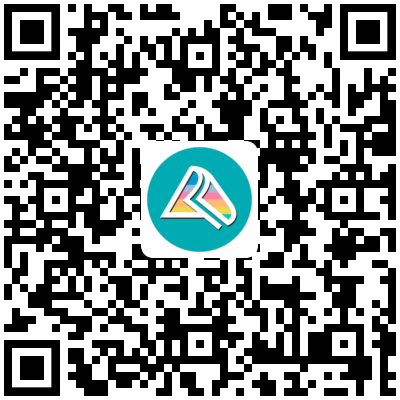AICPA考试信息技术IFRS内容转换思考(六)
Case Study Example:
IFRS Transition in Canada
Requirements
In Canada,publicly accountable profit-oriented enterprises will be required to use IFRS in interim and annual financial statements on or after January 1,2011.The same Canadian entities that are facing the IFRS switchover in 2011 are currently exploring the use of the Extensible Business Reporting Language(XBRL)within a voluntary filing program(VFP)launched by the Canadian Securities Administration(CSA).The VFP is based on the local GAAP taxonomy(CA-GAAP)and IFRS.
This situation suggests that,on one hand,the Canadian business community is facing a transition similar to the one that the U.S.business community experienced with the SEC XBRL VFP,now a mandate.On the other hand,they are also facing the certainty of a relatively near switch-over to a different set of accounting principles.This creates two requirements for the business community to adhere to:adoption of a new reportingoriented technology(XBRL)and transition to a new set of accounting principles in regulatory reporting(IFRS).
While the transition to IFRS may impact a magnitude of systems as described in Exhibit 1,this particular case study example will primarily focus on the consolidation and reporting aspects of the IFRS conversion project at the trial balance level and during the phase of meeting dual-reporting requirements(or parallel reporting in IFRS and Canadian GAAP).
Why XBRL
XBRL provides two key features to support the transition to IFRS:
·Financial Reporting(FR)XBRL taxonomies provide an existing authoritative,standardized and freely available framework to support both CA-GAAP and IFRS
·The XBRL Global Ledger taxonomy(XBRL GL)enables a distinctive standard-based approach that captures differences in accounting principles at trial balance or transactional level and reflect them in the resulting financial statements
The Convergence Assistant
XBRL Canada,the local Jurisdiction of XBRL International Inc.,has worked with Canadian regulators,accounting firms,and the XBRL team of the IASB in various initiatives designed to support the Canadian business community in the transition.Among these initiatives is the development of the Convergence Assistant(CA)—convergenceassistant.com—an XBRL-based,publicly and freely available tool to help support both the transition to IFRS and the implementation of XBRL for regulatory filings.
The CA allows the user to upload a trial balance and to map its chart of accounts to a standard chart of accounts to generate the"views"of the resulting financial statements under both the IFRS and the CA-GAAP principles,leveraging predefined mappings—also expressed in a standardized XBRL format—to the IFRS and CA-GAAP XBRL taxonomies.
It is important to note that the CA is meant to help companies understand how standards-based tools—and XBRL in particular—can support the process of IFRS transition,not intended to provide a complete solution.In this example,only trial balance information is considered;this means that differences between the two sets of accounting principles that are not captured at trial balance level are not supported.
This example can help users understand the concept of standardizing metadata and use it as a foundation to implement within their own corporate environment to provide the level of completeness required.However,it is possible to apply the same standardized approach to information"below"the trial balance level–at transactional level,where many of the differences that are not immediately available in a simple account to account mapping are captured.It is also possible to standardize and incorporate in the same way nontransactional information that is also required for a complete set of financial statements.The more the user broadens the scope of standardization and inclusion of different types of data,the more the end result will be complete and final.
On the other end,there is value also in not going all the way,standardize only a part of the process where the benefits of standardization of data from different data sources/business units/processes are particularly significant and integrate the additional information required in other ways in a separate step.The value of a standards-based approach is that it does not replace(necessarily)existing processes and applications;it helps integrate data and make retrieving/reporting the data more efficient.
Process Overview
·Reporting structural differences between local GAAPs and IFRS are often,even though not exclusively,reflected at trial balance level—See Exhibit 5 for an example
·A standard chart of accounts(SCOA)with predefined mappings to IFRS and local GAAP financial reporting concepts can distinguish these differences and make them available in an applicationindependent environment—meaning that they can be applied to corporate data no matter in what accounting software or ERP application that data was created or is stored—and immediately applicable to the business‘ specific data with a simple account-to-account mapping
·Other differences can be reflected at more granular level—journals,transactions—that can also be standardized and linked in a similar way
·A relevant part of the IFRS/Local GAAP gap analysis can be captured using XBRL GL,the Canadian GAAP,and IFRS XBRL taxonomies
Software applications based on standards such as XBRL help companies transition from local standards to IFRS more easily.While all the functionalities that the Convergence Assistant does can easily be achieved by a proprietary-based application developed for the purpose,utilizing a standards-based application has additional benefits;the Convergence Assistant and the artifacts that it generates can tailor to the user‘s specific requirements,integrate in their existing processes and IT infrastructure without the need to modify them in any way,and cross-support other key internal reporting and auditing processes.
Exhibit 5
An example of reconciliation between different financial reporting standards at trial balance level

Conclusion to Case Study Example
The Canadian experience shows how a standards-based IT approach can not only provide an effective solution for the immediate need of transitioning to IFRS,but can also do so in an application-independent environment.The fact that corporate data are seldom,if ever,available in a single data repository/software package—even when a consolidation/reporting application is in place—is a major issue that makes the reporting and transition process even more challenging.
A standards-based approach successfully addresses this process issue by providing a single,standardized"view"on the relevant data no matter where they were created or are currently stored,via mapping.Once the data is standardized,a single,consistent set of conversion rules supported by an open standard and centrally maintained can be applied to it.This enables/supports the transition process;compliance with an XBRL regulatory mandate—if existing—is also achieved along the way.
Such a solution becomes a sort of standardized browser that allows leveraging the intellectual property on the internal knowledge of local GAAP/IFRS convergence or transition and make it transparently available through the mappings to enable the automated comparison and reconciliation between the financial statements expressed under the two sets of accounting principles.
In a broader perspective this approach enables a more sustainable processing environment that can effectively automate current compliance processes that are largely manual,decentralized and redundant,especially in global entities that have to comply with different jurisdictional requirements.
Even though not in scope in the Canadian application,the extensibility of XBRL taxonomies and the possibility to support additional reports that share the same underlying data are represented by XBRL taxonomies,either publicly available or developed internally.This provides opportunities for businesses to build on this standards-based data integration,reconciliation and convergence approach to support other key processes like internal reporting—business intelligence,tax compliance,management reporting—internal auditing and controls.Another key consideration in this respect is that the implementation of this approach does not require the replacement of the existing systems;rather,it complements them by providing incremental functionalities that would otherwise require a substantial investment in the corporate IT environment.



